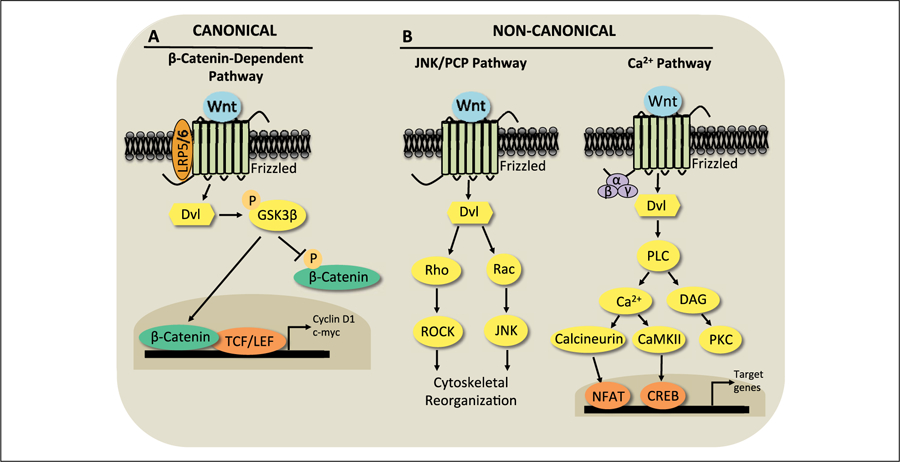Figure 1.

Wnt signaling is mediated by canonical and non-canonical pathways. (A) Canonical Wnt/β-catenin signaling is activated when a canonical Wnt ligand binds to a frizzled (Fzd) receptor and its co-receptor LRP 5/6. This leads Dishevelled (Dvl) to phosphorylate GSK3β on Serine 9, which inactivates GSK3β. This inactivation decreases phosphorylation of the transcriptional activator β-catenin and increases nuclear translocation of β-catenin, which then interacts with TCF/LEF transcriptional complexes to increase expression of downstream target genes such as Cyclin D1 and c-myc. (B) Wnt ligands binding to Fzd receptors can also activate the non-canonical JNK/planar cell polarity (PCP) or the Wnt/Ca2+ pathways. In the JNK/PCP pathway, activation of Dvl signals to Rho and Rac GTPases to activate ROCK and JNK, respectively, to regulate cytoskeletal reorganization. In the Wnt/Ca2+ pathway, G-protein mediated activation of phospholipase C increases intracellular Ca2+ and diacylglycerol (DAG). The rise in intracellular Ca2+ activates CaMKII and calcineurin to modulate transcriptional activity through regulation of CREB and NFAT, respectively. DAG activates the enzyme protein kinase C (PKC).
